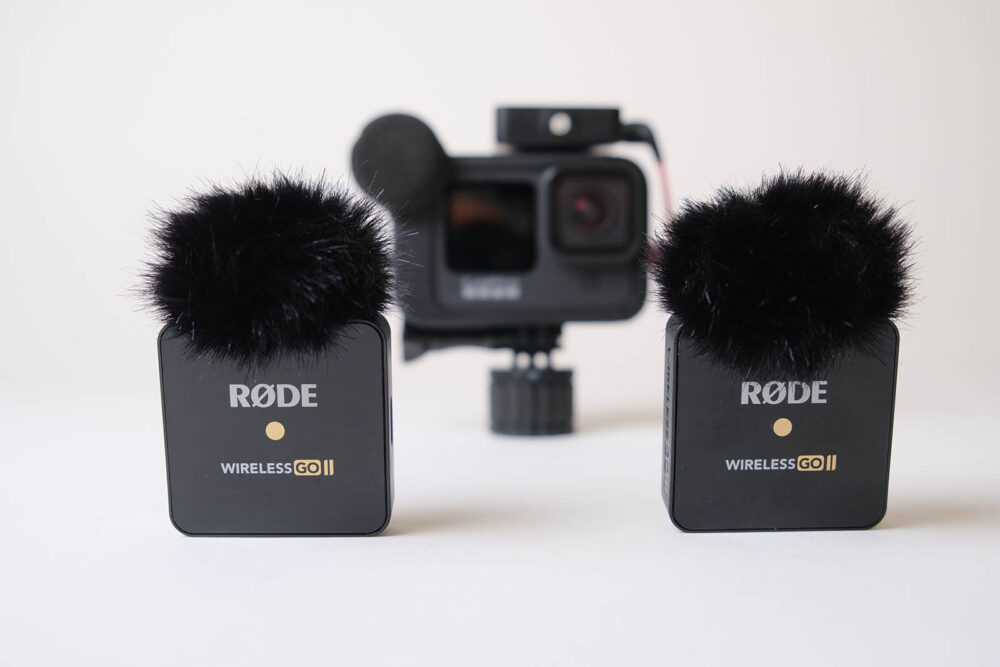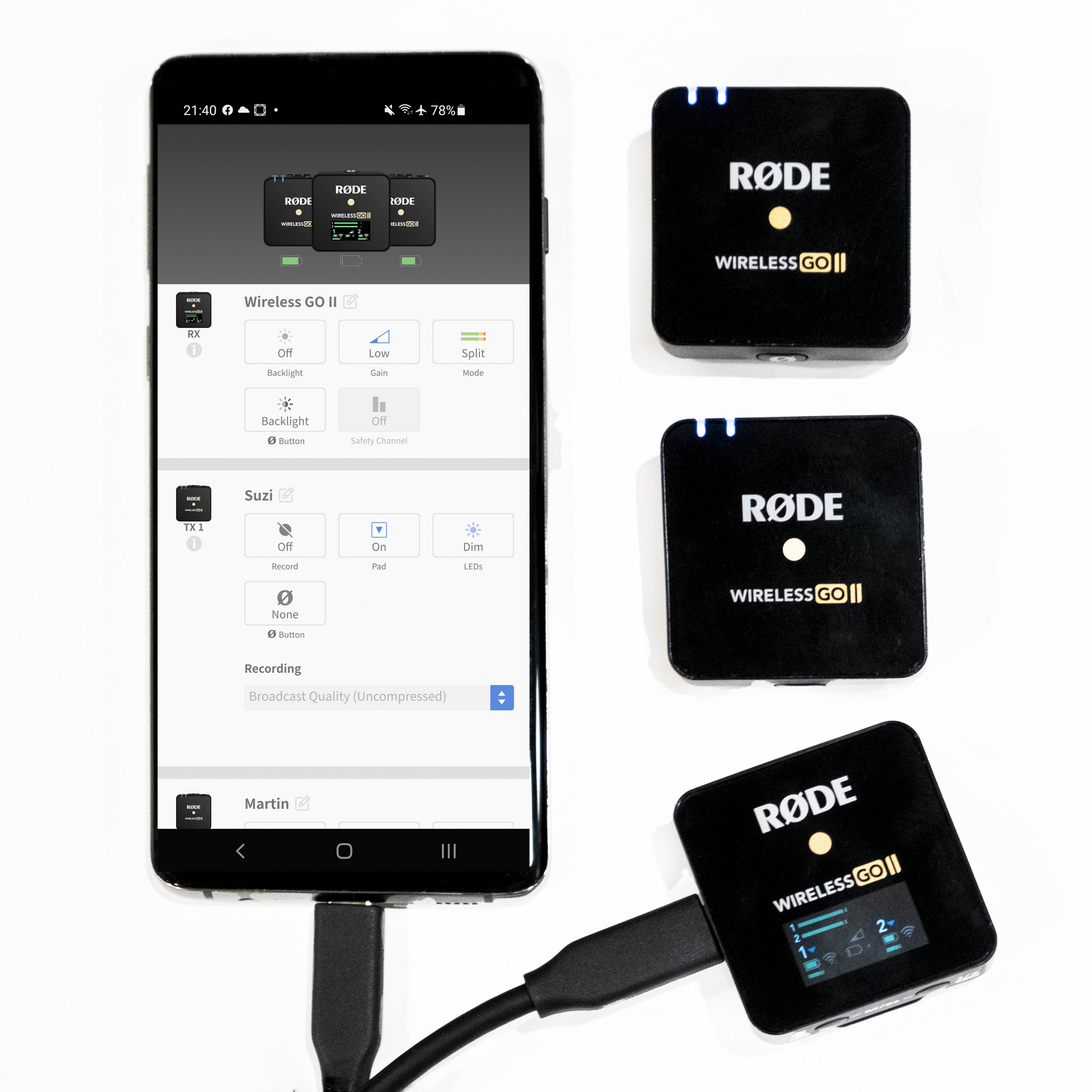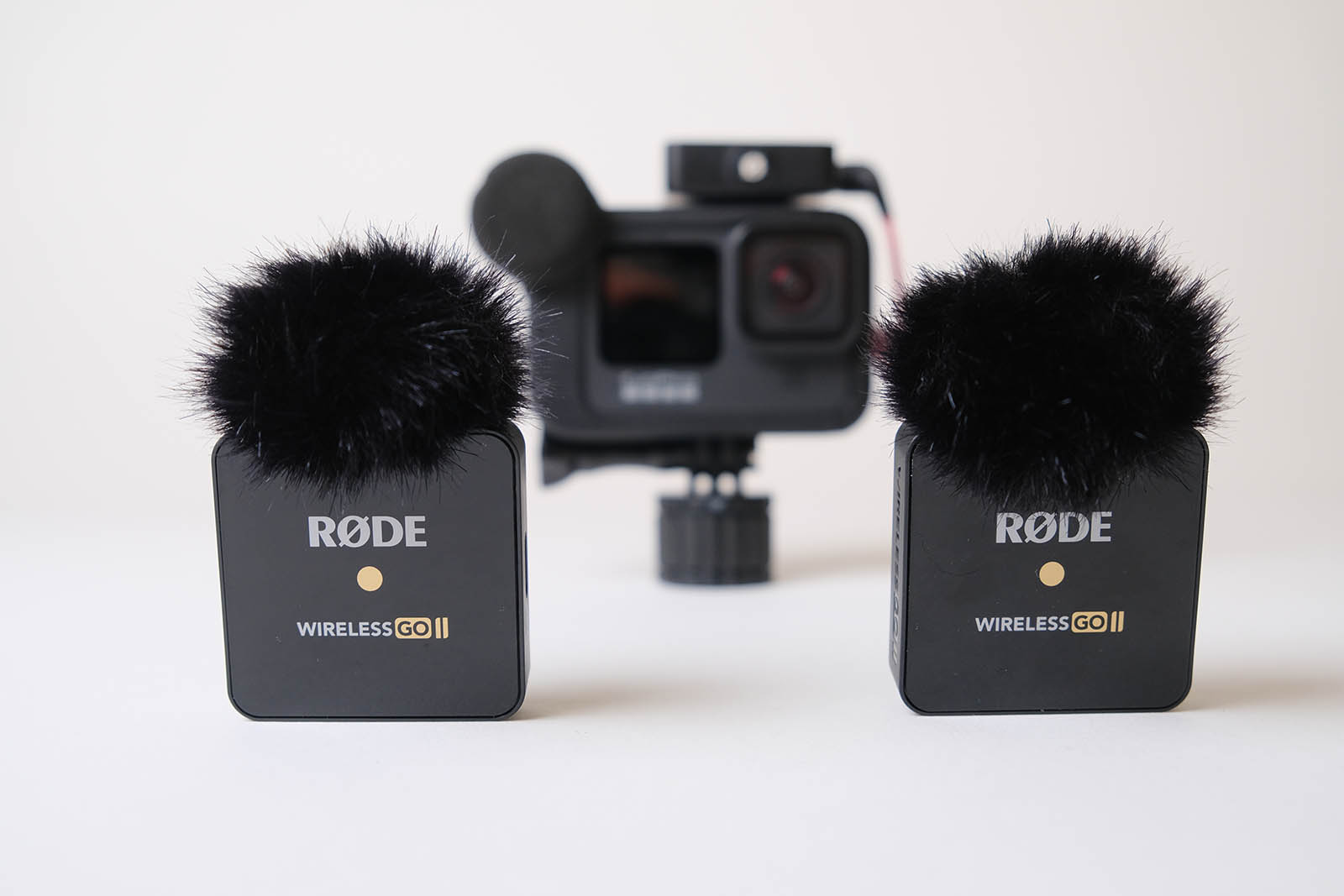After 6 months of using the Rode Wireless Go 2 to film travel vlogs and in-studio talking head videos, we have our long-term review of the product. Here are the good and bad points about this affordable wireless microphone system, plus an overview of the brand new Rode Central Mobile App.
What is Rode Wireless Go 2?
In case you haven’t heard of it, the Rode Wireless Go 2 is the second iteration of the original Rode Wireless Go. When it first came out in 2019, the Wireless Go was among the first (if the first) consumer-friendly wireless mic system at an affordable price. Wireless microphones are invaluable for video creators as they allow for the consistent, clear recording of audio without being tied to the camera via a cord or cable.
The Rode Wireless Go was also innovative in that it had a built-in microphone on the transmitter, plus a fuzzy windscreen. There was also a 3.5mm microphone jack for plugging in a wired lavalier or lapel microphone. The Rode Wireless Go 2 retains both of these features, but it adds a second transmitter with a built-in microphone.
How we use it
As a 2-person vlogging team, the Rode Wireless Go 2 is THE product we’ve been waiting for. Having 2 transmitters with built-in mics has been our top solution for making sure both of our voices are being picked up while vlogging. This mic system has literally been our most-used new product of 2021. We use the Rode Wireless Go 2 with the GoPro Hero 9 and 10, and our Fujifilm X-T3 and Sony a7riii mirrorless cameras.

Do you really need a second microphone?
For those who vlog solo or think that only one transmitter/microphone is needed, there’s a strong case for having 2: the second transmitter serves as a backup. There are countless times when one of us has gone out with a single transmitter only to realize it wasn’t fully charged. Having a second transmitter would come in handy in these cases. Also, the Rode Wireless Go 2 offers several handy new features compared to the original version. The first is a windscreen that attaches to the built-in microphone much more efficiently than on the original Rode Wireless Go. Secondly, the Rode Wireless Go 2 transmitters now offer onboard recording. This is another form of audio backup. Finally, the transmission range nearly doubled from 70 meters on the original Rode Wireless Go to 200 meters on the Go 2.
Long-term review: The good
After 6 months of using the Rode Wireless Go 2 in a variety of situations with many different cameras, this mic system has proved to be incredibly reliable. All components hold battery charges well, they last long (7 hours each), and the only time that audio has failed to record has been a result of user error (ie. forgetting to turn on the receiver).
We predominately use the built-in mics on the transmitters and find that audio quality is pretty good. Sometimes, the audio can clip, even when using the lowest gain setting. However, the audio is significantly better than the onboard mics on our cameras. We also love the alternative of easily plugging in a wired lav mic when we want better audio quality, or to hide the transmitters.
![]()
![]()
Long-term review: The bad
When it comes to negative points of the Rode Wireless Go 2, we can’t think of many. Our main problems have stemmed from user error, such as forgetting to turn on a transmitter or receiver, or not fully charging one of them. Along those lines, it is a pain to have to connect a USB-C cable to all 3 units to charge them. Thankfully, a third-party alternative has come out from ZGCine. This charging case fits two transmitters and a receiver and it can fully charge each unit up to 2 times. The case takes about an hour to fully charge, and it serves as an external battery, allowing you to charge other items like a phone or camera.
One thing on our wish list is the ability to individually dial in the gain for each transmitter. Currently, you can set the gain as a whole for both transmitters, but not for each one. We’d also like to be able to lower the gain even more than is currently offered to avoid audio clipping.
Another possible downside to some might be the price. The original Rode Wireless Go costs $200 USD, and the Wireless Go 2 is $299 USD. This might seem expensive to some, but to us, it is a fair price considering how high quality the microphones have been.
The NEW Rode Central Mobile App
Just as we were readying the 6-month review of the Rode Wireless Go 2, Rode finally unveiled the new Rode Central app for mobile phones! This is big news because a previous downside was the fact that Rode Central was only available on desktop computers. Rode Central is key for unlocking even more settings on the Rode Wireless Go 2, and it simply wasn’t feasible to always have a computer on hand to do this. With this new app, you can now connect the receiver to your phone and control settings on the transmitters. Note that you will need a USB-C to phone cable.
So as of now, Rode Central mobile can now be downloaded on both iOS and Android phones.
![]()
 How to activate Rode Central Mobile
How to activate Rode Central Mobile
First, you must do a firmware update of the Rode Central desktop computer app, or install it if you haven’t already. Make sure you have the most current app version; if it’s an old version, re-install the new version. Next, connect the receiver and transmitters via USB-C to the Rode Central desktop computer app and do a firmware update of each device. Then download the Rode Central Mobile app on your smartphone. Turn on the receiver and 2 transmitters and make sure they’re connected. Then connect the receiver to your phone (USB-C to USB-C cable for Android, or UBC-C to Lightning cable for iPhone). Open the Rode Central Mobile and now you can update the settings for the transmitters.
What you can do in the Rode Central App
When connected to the Rode Central app either via desktop computer or phone, here are some settings you can control:
- Gain control (course or fine)
- Merged audio or split; if Merged, can also enable safety track
- Turn backlight and LEDs on/off
- Enable onboard backup recording – each transmitter can store over 40 hours of compressed audio
- Activate a “pad” to reduce the sensitivity of the built-in mic
- Program the Rode symbol button to mute the transmitter or do nothing (do nothing is best)
- Give a custom name to each Transmitter
